 W
WHirotugu Akaike was a Japanese statistician. In the early 1970s, he formulated the Akaike information criterion (AIC). AIC is now widely used for model selection, which is commonly the most difficult aspect of statistical inference; additionally, AIC is the basis of a paradigm for the foundations of statistics. Akaike also made major contributions to the study of time series. As well, he had a large role in the general development of statistics in Japan.
 W
WSyun-Ichi Akasofu is the founding director of the International Arctic Research Center of the University of Alaska Fairbanks (UAF), serving in that position from the center's establishment in 1998 until January 2007. Previously he had been director of the university's Geophysical Institute from 1986.
 W
WAkiyama Yoshifuru was a general in the Imperial Japanese Army, and is considered the father of modern Japanese cavalry. He was Vice Admiral Akiyama Saneyuki's older brother.
 W
WThomas Baty, also known by the name Irene Clyde, was an English transgender lawyer and expert on international law who spent much of their career working for the Imperial Japanese government. In 1909, they published Beatrice the Sixteenth, a utopian science fiction novel, set in a postgender society. They also co-edited Urania, a privately printed feminist gender studies journal, alongside Eva Gore-Booth, Esther Roper, Dorothy Cornish, and Jessey Wade.
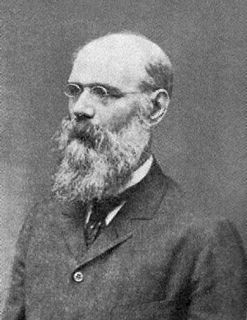 W
WEdward Divers FRS was a British experimental chemist who rose to prominence despite being visually impaired from young age. Between 1873 and 1899, Divers lived and worked in Japan and significantly contributed to the science and education of that country.
 W
WJames Harold Elmsley, was a Canadian Major-General who served with the Royal Canadian Dragoons in the Canadian Expeditionary Force during the First World War. Later in the war, he would command the 8th Canadian Infantry Brigade, as well as the Canadian Siberian Expeditionary Force during the Allied intervention in the Russian Civil War.
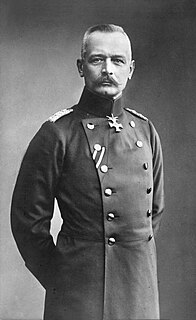 W
WGeneral Erich Georg Sebastian Anton von Falkenhayn was the second Chief of the German General Staff of the First World War from September 1914 until 29 August 1916. He was removed on 29 August 1916 after the failure at the Battle of Verdun, the opening of the Battle of the Somme, the Brusilov Offensive and the entry of Romania into the war on the Allied side undid his strategy to end the war before 1917. He was later given important field commands in Romania and Syria. His reputation as a war leader was attacked in Germany during and after the war, especially by the faction which supported Paul von Hindenburg. Falkenhayn held that Germany could not win the war by a decisive battle but would have to reach a compromise peace; his enemies said he lacked the resolve necessary to win a decisive victory. Falkenhayn's relations with the Chancellor Theobald von Bethmann-Hollweg were troubled and undercut Falkenhayn's plans.
 W
WTetsuya Theodore Fujita was a Japanese-American meteorologist whose research primarily focused on severe weather. His research at the University of Chicago on severe thunderstorms, tornadoes, hurricanes, and typhoons revolutionized the knowledge of each. Although he is best known for creating the Fujita scale of tornado intensity and damage, he also discovered downbursts and microbursts, and was an instrumental figure in advancing modern understanding of many severe weather phenomena and how they affect people and communities, especially through his work exploring the relationship between wind speed and damage.
 W
WMinoru Genda was a Japanese military aviator and politician. He is best known for helping to plan the attack on Pearl Harbor. He was also the third Chief of Staff of the Japan Air Self-Defense Force.
 W
WAugust Gyldenstolpe is a Swedish politician and diplomat who from 22 December 1904 until 2 August 1905 served as Minister of Foreign Affairs of Sweden.
 W
WJosias von Heeringen was a German general of the imperial era who saw service in the First World War.
 W
WFrank Thomas Hines was a United States military officer and head of the U.S. Veterans Bureau from 1923 to 1945. Hines took over as head of the Veterans Bureau after a series of scandals discredited the agency. He was considered a "man of stern honesty." In response to the scandals, the field service was "centralized to establish strict controls and accountability."
 W
WEdward Howard House was an American journalist who wrote for the New York Tribune and later founded the Japan-based English-language newspaper Tokio Times.
 W
WKinji Imanishi was a Japanese ecologist and anthropologist. He was the founder of Kyoto University's Primate Research Institute and, together with Junichiro Itani, is considered one of the founders of Japanese primatology.
 W
WTomi Kōra was a Japanese psychologist, peace activist, and politician. She published under the name Tomiko Kōra.
 W
WBunjirō Kotō was a Japanese earth scientist (Geologist). He is from Iwami Province. Kotō is from Tokyo Imperial University, and after graduating, he became a professor at Tokyo Imperial University. He is known for taking photographs of the Neodani Fault when he investigated the 1891 Mino–Owari earthquake.
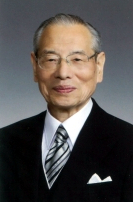 W
WJun Kubota is a scholar of Japanese literature. He is best-known for his work on medieval waka.
 W
WBernard Howell Leach, was a British studio potter and art teacher. He is regarded as the "Father of British studio pottery".
 W
WManabu Miyoshi was a Japanese botanist. The standard author abbreviation Miyoshi is used to indicate this person as the author when citing a botanical name.
 W
WNakamura Ganjirō II was a Japanese kabuki and film actor. He appeared in more than 70 films between 1941 and 1980, directed by notable filmmakers such as Yasujirō Ozu, Kenji Mizoguchi, Akira Kurosawa, and Mikio Naruse.
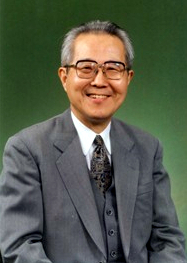 W
WTakashi Negishi is a Japanese neo-Walrasian economist.
 W
WSatoshi Ōmura [satoɕi oːmu͍ɽa] is a Japanese biochemist. He is known for the discovery and development of hundreds of pharmaceuticals originally occurring in microorganisms. In 2015, he was awarded the Nobel Prize in Physiology or Medicine jointly with William C. Campbell for their role in the discovery of avermectins and ivermectin, the world's first endectocide and a safe and highly effective microfilaricide. It is believed that the large molecular size of ivermectin prevents it from crossing the blood/aqueous humour barrier, and renders the drug an important treatment of helminthically-derived blindness.
 W
WEio Sakata was a 9-dan Japanese professional Go player.
 W
WBaron Samejima Shigeo was a general of the Imperial Japanese Army during the Russo-Japanese War.
 W
WShigesaburō Miyazaki was a Japanese major general of the Imperial Japanese Army who was notable for commanding the Japanese 31st Division in the Burma Campaign of 1944. His eldest son was Shigeki Miyazaki who was the former president of Meiji University.
 W
WTeiichi Suzuki was a lieutenant general in the Imperial Japanese Army, a minister of state, and member of the House of Peers. A close associate of Hideki Tojo, he helped to plan Japan's wartime economy.
 W
WJan Syrový was a Czechoslovak Army four star general and the prime minister during the Munich Crisis.
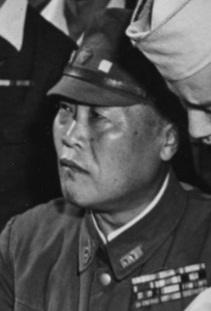 W
WYoshio Tachibana was a lieutenant general in the Japanese Imperial Army during World War II. He was commander of the Japanese garrison in Chichijima, Ogasawara Islands, and was later tried and executed for the Chichijima incident, a war crime involving torture, extrajudicial execution and cannibalism of American prisoners of war.
 W
WYoshitsugu Tatekawa was a lieutenant-general in the Imperial Japanese Army in World War II. He played an important role in the Mukden Incident in 1931 and as Japanese ambassador to the Soviet Union he negotiated the Soviet–Japanese Neutrality Pact in 1941.
 W
WGensui Count Terauchi Masatake, GCB, was a Japanese military officer, proconsul and politician. He was a Gensui in the Imperial Japanese Army and the Prime Minister of Japan from 1916 to 1918.
 W
WCount Toda Ujitaka was the 11th and final daimyō of Ōgaki Domain under the Bakumatsu period Tokugawa Shogunate of Japan. He was the 12th hereditary chieftain of the Toda clan. During the Meiji period, he was a diplomat and served as ambassador of Japan to Switzerland and Austria-Hungary.
 W
WTōdō Takayuki was the 11th daimyō of Tsu Domain under the late Edo period Tokugawa shogunate and the 19th hereditary chieftain of the Tōdō clan. Takayuki's sudden betrayal of the Tokugawa forces at the Battle of Toba–Fushimi during the Boshin War was one of the decisive factors which turned the battle in the imperial army's favor.
 W
WKenji Tomita was a Japanese politician. He was born in Kobe. He graduated from Kyoto University. He was governor of Nagano Prefecture (1938–1940), served as Cabinet Secretary under Fumimaro Konoe, and was elected to the House of Representatives in 1952. He was a recipient of the Order of the Sacred Treasure.
 W
WGuy Eastman Tripp was an American business executive and an officer in the United States Army. A longtime manager and executive for several companies, he served as chairman of the Westinghouse Electric Corporation board of directors from 1912 until his death. Tripp was also a director of more than 20 other companies, including several Westinghouse subsidiaries.
 W
WBaron Tsuchiya Mitsuharu was a general in the early Imperial Japanese Army.
 W
WTuanku Tengku Fauziah binti Almarhum Tengku Abdul Rashid is the current Raja Perempuan of Perlis. She also served as the Raja Permaisuri Agong of Malaysia from 13 December 2001 to 12 December 2006.
 W
WBaron Ueda Arisawa was a general in the early Imperial Japanese Army.
 W
WOtozō Yamada was a career officer and general in the Imperial Japanese Army, serving from the Russo-Japanese War to the end of World War II.
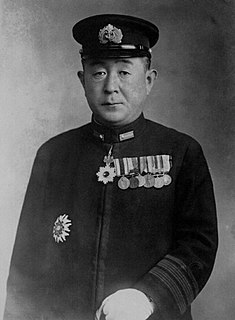 W
WTamon Yamaguchi was a rear admiral in the Imperial Japanese Navy who served during the Second Sino-Japanese War, and in the Pacific War during World War II. Yamaguchi′s carrier force was part of the attack on Pearl Harbor. He subsequently participated in the Battle of Midway, where he was killed in action, choosing to go down with the aircraft carrier Hiryū when it was scuttled after being crippled by aircraft from USS Enterprise and USS Yorktown.
 W
WYoshiko Yamaguchi was a Japanese singer, actress, journalist, and politician. Born in China, she made an international career in film in China, Hong Kong, Japan and the United States.
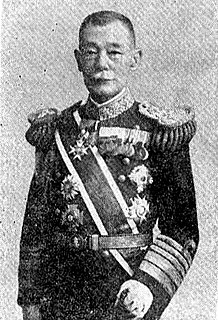 W
WBaron Yamashita Gentarō was an admiral in the early Imperial Japanese Navy.
 W
WYamaya Tanin was a naval theorist and admiral in the Imperial Japanese Navy during the early twentieth century. He was a great-grandfather of Japanese Empress Masako through her mother's lineage.
 W
WYoshida Masujirō was a vice admiral in the Imperial Japanese Navy.
 W
WZengo Yoshida was an admiral in the Imperial Japanese Navy.